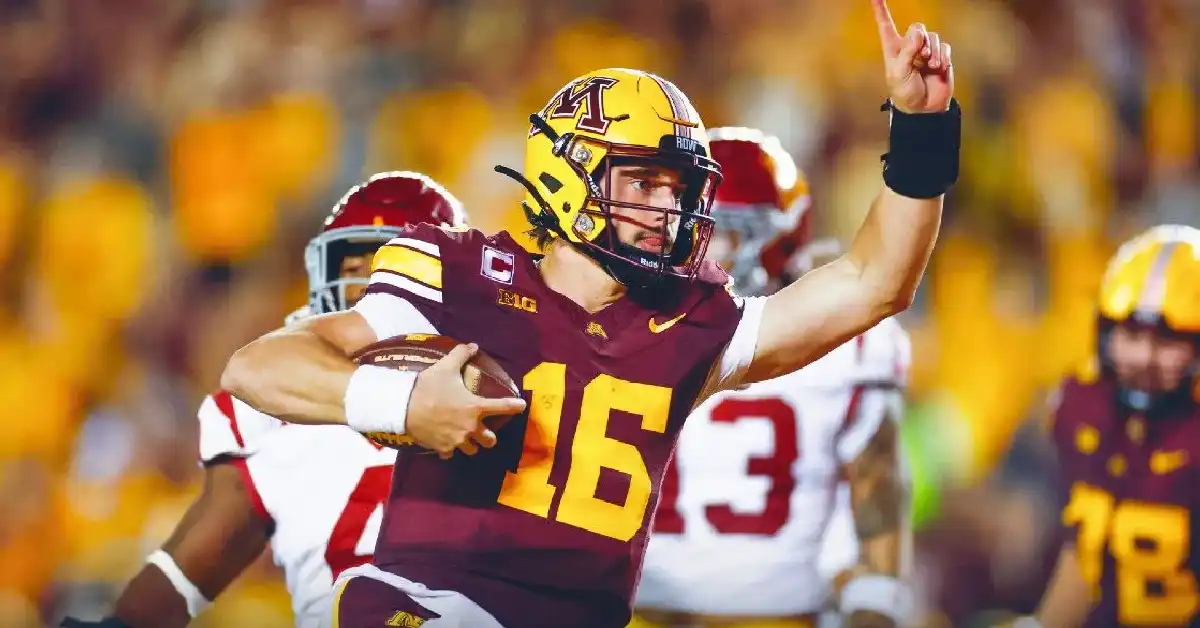Sports
How Many Quarters in Football? A Complete Guide to Game Structure and Timing

Introduction
Football is one of the most popular sports in the world, especially in the United States. Whether you’re a casual viewer, an aspiring player, or a fantasy league enthusiast, knowing how many quarters in football is essential to understanding the game’s rhythm and strategic flow.
From high school matchups to intense NFL battles, the game’s time structure influences play style, coaching decisions, and player stamina. Yet, many fans still wonder about the number of quarters, their duration, and whether the structure changes at different levels.
In this comprehensive guide, we’ll break down everything you need to know about how many quarters in football, explain how the game clock works, highlight key differences across high school, college, and professional play, and offer a comparison chart to make things crystal clear.
What Are Quarters in Football?
In American football, the game is divided into units of time called quarters. Each quarter represents one-fourth of the game, and together, they form the full duration of regular play.
A standard football game is structured as follows:
- 4 quarters
- Each quarter is 15 minutes long in most levels, with some variations
- A halftime break occurs after the 2nd quarter
- Between quarters, there are short breaks to allow for team changes, reviews, and other game logistics
Quarters are essential for organizing the gameplay and giving coaches the opportunity to strategize between segments. They also allow for scheduled media breaks, injury checks, and other game-related procedures.
How Many Quarters in Football at Different Levels?
While the standard answer is four, the actual length of each quarter and associated breaks can vary depending on the level of play. Here’s a breakdown:
| Level of Play | Number of Quarters | Length per Quarter | Halftime Duration | Overtime Rules |
|---|---|---|---|---|
| NFL (Pro) | 4 | 15 minutes | 12 minutes | 10-minute sudden death (if needed) |
| NCAA (College) | 4 | 15 minutes | 20 minutes | Alternating possessions from the 25-yard line |
| High School | 4 | 12 minutes | 15 minutes | Varies by state; usually alternating possessions |
| Youth Football | 4 | 8–10 minutes | 10 minutes | Generally no overtime |
| Arena Football | 4 | 15 minutes | 15 minutes | 15-minute overtime, sudden death format |
A Breakdown of the Football Game Flow
Understanding how many quarters in football is just one part of grasping the full structure. Here’s how a typical game flows:
1st Quarter
- Kickoff begins the game.
- Teams try to establish momentum early.
- Coaches test offensive and defensive strategies.
2nd Quarter
- Often sees more intense gameplay as teams adapt.
- Ends with a halftime break, which allows players to recover and coaches to recalibrate.
Halftime
- Time for entertainment (especially in NFL).
- Coaches address key issues.
- Players hydrate, receive treatment, and rest.
3rd Quarter
- Teams return with adjusted strategies.
- Momentum shift is common here.
4th Quarter
- High tension, especially in close games.
- Often filled with timeouts, challenges, and clock management plays.
What Happens If the Game Is Tied After Four Quarters?
If the game ends in a tie after four quarters, overtime (OT) rules apply. The format of overtime varies depending on the level:
- NFL: 10-minute sudden-death overtime, but both teams must get at least one possession unless the first possession ends in a touchdown.
- College Football: Each team starts at the opponent’s 25-yard line and alternates possessions.
- High School Football: Overtime rules are decided at the state level but often mirror the college format.
Overtime adds drama and excitement, but it also brings strategic complexities as coaches must quickly adjust to a condensed format.
Clock Management and Timeout Strategy
Understanding how the game clock functions is just as important as knowing how many quarters in football exist.
- Each team gets three timeouts per half
- Clock stops for:
- Incomplete passes
- Players going out of bounds
- Timeouts
- Penalties
- Scoring plays
Smart coaches use timeouts strategically—either to stop the clock near the end of a half or to challenge referee decisions.
Key Differences Across Football Levels
Let’s take a deeper look at how gameplay varies across different levels of football despite the consistent quarter structure:
NFL (National Football League)
- Most structured and strategic
- Time management is critical
- Extensive use of technology and reviews
College Football (NCAA)
- More dynamic, with younger athletes
- Longer halftime for marching bands and media
- Complex overtime structure
High School Football
- Shorter quarters (12 minutes)
- Less reliance on advanced play-calling
- Designed to develop talent
Youth Football
- Focus on learning and fun
- Games are shorter and less intense
- No complex rules or overtime in most cases
Why Are There Four Quarters in Football?
The four-quarter system provides several benefits:
- Balanced gameplay: It divides the game into manageable sections.
- Strategic pauses: Coaches can regroup and make adjustments.
- Audience engagement: Keeps fans engaged with natural breaks.
- Commercial structure: Especially in professional leagues, quarters help organize broadcast schedules.
Comparison Chart: Quarter System Across Football Variants
| Football Type | Number of Quarters | Quarter Length | Halftime | Overtime Type |
|---|---|---|---|---|
| NFL | 4 | 15 min | 12 min | Sudden death (10 min) |
| NCAA College | 4 | 15 min | 20 min | Alternating possessions |
| High School (USA) | 4 | 12 min | 15 min | State-based rules |
| Youth League | 4 | 8–10 min | 10 min | Rarely played |
| Arena Football League | 4 | 15 min | 15 min | Sudden death or full OT quarter |
Frequently Asked Questions (FAQs)
1. How many quarters in football are there in total?
There are four quarters in a football game, each representing one-fourth of the total game time.
2. Are all football quarters the same length?
Not always. While NFL and college quarters are 15 minutes long, high school quarters are usually 12 minutes, and youth games often feature 8–10 minute quarters.
3. What is the purpose of halftime?
Halftime allows players to rest and recover, coaches to re-strategize, and is used for entertainment and commercials in televised games.
4. Does the quarter length include stoppages?
No. The game clock stops for various reasons like incomplete passes, timeouts, and out-of-bounds plays, so actual time is much longer than the 60 minutes shown on the clock.
5. Can a football game end in a tie?
Yes, especially in the NFL regular season if neither team scores in overtime. However, college and most high school games have systems to ensure a winner.
Conclusion: Master the Game with Timing Knowledge
Whether you’re watching from the stands, streaming at home, or planning to play, understanding how many quarters in football is fundamental. While four quarters might sound simple, the rules, strategies, and clock management nuances vary significantly across leagues.
By knowing how time is divided, when halftime occurs, and how overtime works, you gain a deeper appreciation for the game’s complexity. Football is more than just touchdowns and tackles—it’s a chess match played within a structured time frame.
Now that you’ve got a solid grip on the quarters and timing system, you’re better prepared to enjoy football in all its thrilling forms—from youth games to Super Bowl Sundays.

Sports
NFC East History: The Legendary Division That Shaped the NFL

Introduction
The NFC East History is one of the most fascinating stories in the NFL. Known as the toughest and most competitive division in football, it has produced legendary teams, unforgettable rivalries, and multiple Super Bowl champions. From iconic franchises to star players who defined eras, the NFC East stands tall as a powerhouse of American football. Fans often say that if you can survive the NFC East, you can compete with anyone in the league.
In this article, we’ll dive deep into the NFC East History, exploring its formation, greatest moments, biggest rivalries, and the legendary players who made this division iconic. We’ll also break down team achievements, Super Bowl victories, and provide a comparison chart for quick insights.
1. Origins of the NFC East History
The NFC East was officially formed during the 1970 AFL-NFL merger. It grouped together four franchises that would go on to dominate football for decades. Known for physical play, intense competition, and unpredictable outcomes, the NFC East quickly earned the title “The Beast of the East.”
More Article Here
2. Teams That Define the NFC East
Dallas Cowboys
The Cowboys are the most successful NFC East franchise with multiple Super Bowl victories. Branded “America’s Team,” their star logo is one of the most recognized symbols in sports.
New York Giants
With a proud tradition dating back to the 1920s, the Giants have seen multiple championship eras. Known for defensive dominance, they’ve delivered unforgettable moments in NFL history.
Philadelphia Eagles
The Eagles bring grit and passion to the NFC East. Their loyal fan base and recent Super Bowl victory highlight their rise in modern football.
Washington Commanders
Washington boasts multiple championships and a proud tradition. They have delivered some of the most memorable playoff battles in NFC East History.
3. The Rivalries That Shaped the NFC East
Few divisions can match the NFC East’s intensity. Cowboys vs. Eagles, Giants vs. Cowboys, and Washington vs. Dallas are more than games—they are wars filled with passion, history, and unforgettable moments. These rivalries define the very essence of the NFL.
4. Iconic Moments in NFC East History
-
The Cowboys’ dominance in the 1990s with Troy Aikman, Emmitt Smith, and Michael Irvin.
-
The Giants’ miracle Super Bowl run in 2007, defeating an undefeated New England team.
-
The Eagles’ first Super Bowl victory in 2018, remembered as the “Philly Special.”
-
Washington’s early 1980s dynasty that gave the division national prominence.
5. Super Bowl Success of NFC East Teams
The NFC East is the most decorated division in NFL history. Its teams collectively own 13 Super Bowl titles and countless playoff runs. This consistent success is why the division is respected and feared across the league.
6. Legendary Players Who Made Their Mark
The NFC East has given football fans legends:
-
Dallas Cowboys: Roger Staubach, Emmitt Smith
-
New York Giants: Lawrence Taylor, Eli Manning
-
Philadelphia Eagles: Reggie White, Brian Dawkins
-
Washington Commanders: Joe Theismann, Darrell Green
These icons are remembered not just for their stats but for the way they changed the game.
7. NFC East in the Modern Era
In recent years, the division has remained unpredictable. One year the Cowboys may dominate, the next the Eagles rise, or the Giants make a playoff run. This unpredictability is part of the charm of NFC East History—it’s never easy to crown a winner.
8. Why the NFC East Remains the NFL’s Toughest Division
The NFC East isn’t just about talent. It’s about culture, tradition, and toughness. Every game feels like a playoff. Teams know that to win the NFC East, they must survive some of the fiercest competition in the NFL.
9. Comparison Chart of NFC East Achievements
| Team | Super Bowl Wins | NFC Titles | Division Titles | Notable Era |
|---|---|---|---|---|
| Dallas Cowboys | 5 | 8 | 24 | 1990s Dynasty |
| New York Giants | 4 | 5 | 16 | 2007 & 2011 Runs |
| Philadelphia Eagles | 1 | 4 | 11 | 2018 Championship |
| Washington | 3 | 5 | 15 | 1980s Glory Years |
10. FAQs on NFC East History
Q1. When was the NFC East formed?
The NFC East was created in 1970 during the AFL-NFL merger.
Q2. Which NFC East team has the most Super Bowls?
The Dallas Cowboys lead with 5 Super Bowl victories.
Q3. Why is the NFC East considered so tough?
Because of historic rivalries, physical play, and consistent championship success.
Q4. Who are the most iconic NFC East players?
Legends include Lawrence Taylor, Emmitt Smith, Reggie White, and Darrell Green.
Q5. How many Super Bowls has the NFC East won overall?
The division collectively has 13 Super Bowl championships.
Conclusion
The NFC East History is more than a story of wins and losses—it’s the story of football itself. From legendary teams and unforgettable rivalries to Hall of Fame players and Super Bowl glory, the NFC East defines toughness, tradition, and excellence. Whether you cheer for the Cowboys, Giants, Eagles, or Washington, one thing is certain: this division remains the heart of the NFL.
Sports
Minnesota vs ULL Prediction: Who Holds the Edge?

Introduction
When two college football squads prepare to square off, fans, bettors, and analysts all search for that edge. In the matchup of Minnesota vs ULL, the stakes are high, and the outcome hinges on form, tactics, strengths, and intangibles. In this article, we dive deep into their head-to-head history, current dynamics, strengths and weaknesses, and deliver a well-reasoned prediction. Let’s explore whether Minnesota or ULL has the upper hand — and why.
Understanding the Matchup
First, let’s clarify: “ULL” refers to University of Louisiana at Lafayette (Louisiana-Lafayette, sometimes styled ULL). Minnesota, representing the Big Ten, brings strong resources, depth, and conference competition. ULL competes in the Sun Belt Conference and often faces off against power conference teams for marquee matchups.
Historically, Minnesota has dominated this pairing. In their head-to-head record, Minnesota has won all four past matchups. In the most recent meeting (September 30, 2023), Minnesota prevailed 35–24. That kind of historical dominance gives Minnesota a confidence edge.
However, past success alone doesn’t guarantee a win. Each new year introduces roster turnover, scheme changes, injuries, and momentum shifts.
Recent Form & Team Dynamics
Minnesota
-
Minnesota tends to perform well in non-conference games and has stronger recruiting reach and resources.
-
In their 2023 performance, Minnesota showed ability to pull away late and execute under pressure.
-
Their depth across offense (skill players, receivers) and defense helps in sustaining intensity late in games.
-
That said, Minnesota sometimes faces issues with consistency, especially when facing unfamiliar schemes or high tempo opponents.
ULL (Louisiana-Lafayette)
-
ULL, as a Sun Belt program, often uses creative offensive schemes, misdirection, and plays to exploit mismatches.
-
They can be dangerous at home, leveraging crowd energy, and they may experiment with tempo or gadget plays.
-
Against big conference opponents, ULL often underdogs, but such matches are chances to punch above their weight.
Key Match Factors to Watch
To make a solid prediction, we must compare key factors that typically decide such games:
| Factor | Minnesota Strengths | ULL Strengths / Challenges | Impact |
|---|---|---|---|
| Depth & Roster Quality | Likely more talent across backups, stronger position group depth | Less depth in secondary or line play; fatigue risk | Advantage: Minnesota |
| Offensive Balance | Ability to run and pass, adjust midgame | ULL may lean heavier on trick plays or tempo | Slight edge Minnesota |
| Defensive Consistency | Ability to adapt against multiple looks | May get exposed in middle or on deep passes | Advantage: Minnesota |
| Special Teams & Turnovers | Disciplined in special teams, fewer errors | Potential to force miscues or surprise returns | Could swing game |
| Momentum & Motivation | Confidence from past wins vs underdog status | ULL motivated to prove themselves | Neutralizing factor |
| Injury / Weather / Conditions | More resilience to injuries or adverse conditions | Less margin for error | Edge: Minnesota |
From this chart, Minnesota enters as the favorite, though ULL has upside if they catch Minnesota off guard, especially early.
Betting Angles & Probabilities
Analytical models and simulations (e.g. projective systems run on past matchups) put Minnesota’s win probability well above ULL’s. One projection model estimated Minnesota’s win probability at about 69%, with ULL around 31%. That almost 2:1 ratio suggests Minnesota has a clear edge.
But betting angles aren’t just about who wins. Consider:
-
Spread (point differential): Minnesota is likely favored by multiple points. If the spread is aggressive, ULL could cover if the game stays close.
-
Over/Under (total points): Both teams have potential to score, especially with ULL possibly adopting faster tempo or plays that shift momentum quickly.
-
Live betting / second-half plays: If ULL stays within reach to halftime, there is chance for sudden swings, especially if Minnesota relaxes.
Prediction & Projected Score
Putting together historical dominance, depth, scheme flexibility, and model probabilities, here is the forecast:
-
Winner Prediction: Minnesota
-
Projected Score Range: Minnesota 31 – ULL 20
-
Cover Prediction (Spread): Minnesota covers moderate spreads but not huge blowouts
-
Total Points Prediction: Moderately high scoring (combined in the mid-40s to low 50s)
Minnesota, given its superior roster and consistent performance in key areas, is likely to win with some cushion. ULL will push, possibly thrive early, but likely come up short late.
Why This Prediction Holds Weight
-
Historical dominance — Minnesota has consistently beaten ULL in past meetings, which contributes psychological and structural advantages.
-
Depth & resources — Minnesota typically recruits at a higher level, giving it better substitution flexibility and injury security.
-
Adaptive coaching — The ability to make halftime or midgame adjustments on both sides, but Minnesota tends to do that better in big matchups.
-
Model support — Simulation models already lean heavily to Minnesota.
That said, no prediction is guaranteed. If ULL executes perfectly, forces turnovers, or catches Minnesota off balance, the game could tilt.
5 Frequently Asked Questions (FAQs)
-
What does ULL stand for in this matchup?
ULL refers to University of Louisiana at Lafayette, commonly called Louisiana-Lafayette in college football contexts. -
Is Minnesota always the favorite in this pairing?
Historically yes — past head-to-head results and resource differences often put Minnesota in the favored role. -
Could ULL pull an upset?
It’s possible. If ULL plays aggressively, exploits mismatches, and limits mistakes, they can keep the game tight or win. -
Is the projected score range reliable?
Projections are estimates. They’re based on team strengths and trends but can shift if weather, injuries, or in-game incidents intervene. -
How should bettors use this prediction?
Use predictions as a guide, not the sole decision. Consider spread, over/under, and live conditions. Manage risk, especially in high-variance betting environments.
Conclusion
The Minnesota vs ULL Prediction leans clear: Minnesota holds the advantage in depth, historical edge, adaptability, and probabilistic models. ULL can make the game interesting and may cover in certain conditions, but barring an upset, Minnesota is poised to deliver the win. For bettors and fans alike, keep an eye on in-game momentum, turnovers, and second-half adjustments — these often decide how decisive the victory becomes.
Sports
Boneyard UConn: The Ultimate Hub for Huskies Fans & Sports Talk

When you think about UConn sports, one name consistently stands out—Boneyard UConn. This digital space has evolved into the ultimate hub for passionate Huskies fans. From real-time sports discussions to in-depth analysis and fan engagement, Boneyard UConn offers everything a UConn supporter needs in one place. It’s not just about scores; it’s about community, passion, and staying connected to every game-changing moment.
In this article, we’ll explore the history, features, fan engagement opportunities, and everything else you need to know about Boneyard UConn.
1. What is Boneyard UConn?
Boneyard UConn is a vibrant online community dedicated to University of Connecticut sports fans. It serves as a hub where fans can gather to discuss everything from basketball victories to football game strategies, player performances, and even upcoming talent recruitment.
Unlike typical sports forums, Boneyard UConn creates a family-like atmosphere. Whether you’re a lifelong Huskies fan or a newcomer, you’ll find it welcoming, informative, and packed with energy.
2. History and Growth of Boneyard UConn
Boneyard UConn started as a small community for die-hard fans who wanted a space to discuss UConn sports freely. Over time, as UConn’s basketball program gained national recognition—thanks to legendary coaches and championship titles—the platform expanded.
Today, Boneyard UConn stands as one of the most active and passionate fan spaces in college sports. It bridges the gap between official news outlets and personal fan experiences, creating a dynamic environment for discussion and analysis.
3. Key Features of Boneyard UConn
Here are the top features that make Boneyard UConn unique:
-
Live Game Discussions: Fans share real-time reactions during games.
-
Recruitment Updates: Insights on upcoming talents and transfers.
-
Expert Analysis: Experienced fans often provide deep game breakdowns.
-
Fan Polls & Debates: Engaging conversations about team performance.
-
Event Announcements: Stay informed about UConn sports events and gatherings.
4. Why Boneyard UConn is Important for Fans
For many Huskies fans, Boneyard UConn isn’t just a platform; it’s part of their sports experience. Here’s why:
-
Connection: It connects fans worldwide who share the same passion.
-
Knowledge Sharing: Fans exchange insights, stats, and game analysis.
-
Community Support: From celebrating wins to processing losses, fans rally together.
5. Comparison: Boneyard UConn vs. Other Fan Forums
Here’s a quick comparison to highlight why Boneyard UConn stands out:
| Feature | Boneyard UConn | Other Fan Forums |
|---|---|---|
| Real-time discussions | Yes | Sometimes |
| Recruitment updates | Frequent & detailed | Limited |
| Community interaction | Highly engaging | Moderate |
| Expert insights | Many experienced members | Few contributors |
| Event announcements | Regular updates | Rare |
6. How Boneyard UConn Enhances Fan Experience
Boneyard UConn transforms passive sports watching into an interactive experience. Fans don’t just consume information—they discuss, analyze, and predict outcomes together.
This two-way communication keeps fans engaged throughout the season, creating an electric atmosphere that mirrors the excitement in stadiums.
7. Expert Insights: The Future of Boneyard UConn
Sports experts believe the future of Boneyard UConn lies in expanding its digital features. Possible upgrades include:
-
Live Video Reactions for games
-
Mobile App Integration for easier access
-
Fan Podcasts for in-depth analysis
These additions could make it even more appealing for younger fans.
8. FAQs about Boneyard UConn
Q1: Is Boneyard UConn free to join?
Yes, it’s completely free for fans to join and participate in discussions.
Q2: Can I access Boneyard UConn on mobile?
Yes, it’s mobile-friendly, so you can stay connected on the go.
Q3: What sports are covered on Boneyard UConn?
Mainly basketball and football, but other UConn sports are also discussed.
Q4: Do players or coaches interact on Boneyard UConn?
Occasionally, but mostly it’s a fan-driven community.
Q5: How do I stay updated on new features?
Regular updates are posted on the platform’s announcements section.
9. Conclusion
Boneyard UConn has grown from a small fan community to a powerhouse hub for Huskies sports enthusiasts. With real-time discussions, expert analysis, and passionate fans, it enhances the sports-watching experience like no other platform.
As it continues to evolve with new features and more interactive opportunities, Boneyard UConn will remain the heartbeat of UConn sports fans worldwide.
-

 Must Read5 months ago
Must Read5 months agoThe Truth Behind the Direct Fairways Lawsuit: What You Need to Know
-

 Business5 months ago
Business5 months agoTop Chartered Accountants Benefits: Guide, Tips, FAQs & More
-

 Tech5 months ago
Tech5 months agoblogsternation .com: Complete Beginner’s Guide, Benefits, and FAQs
-

 Tech3 months ago
Tech3 months agoHow to Upgrade Graphics Driver: Boost Speed, Fix Issues & Enhance Gaming
-

 Education5 months ago
Education5 months agoOxford Acceptance Rate: What It Means, Why It Matters, and How to Beat It
-

 Business5 months ago
Business5 months agoUnlocking the Truth About gomyfinance.com Credit Score
-

 Must Read5 months ago
Must Read5 months agoEscalade Must Have Accessories for the Ultimate Cadillac Experience
-

 Editors Pick4 months ago
Editors Pick4 months agoAstonishing Mist: Why Delta Flight DL275 Diverted LAX Mid‑Pacific


















